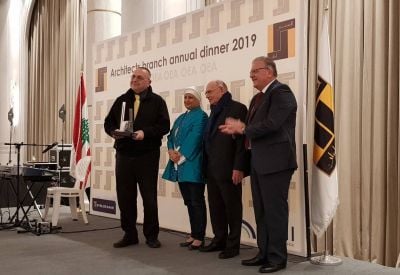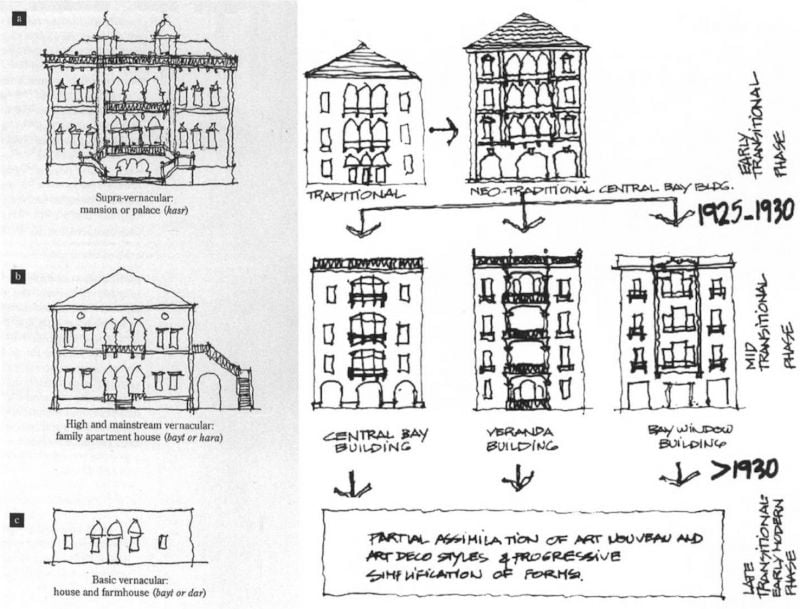
A sketch by Robert Saliba illustrating the evolution of Beirut's residential architecture. (Credit: Archives.org)
BEIRUT — On a Friday evening in October, students, faculty, and family gather at the American University of Beirut to pay tribute to the late Robert Saliba, a longtime professor until he died earlier this month at the age of 72.
The auditorium, at the School of Design’s newly renovated Dar al-Handasah building, is at full capacity.
On display just next door is the exhibition “Beirut Residential Architecture, 1840-1940,” inspired by Saliba’s book Beirut Architecture: Between Tradition and Modernity, 1920-1940. Glass cases show prints of surveyed heritage buildings, along with 3D renderings of their most prominent features, including bay windows, banisters, and triple-arched windows.
The exhibition illustrates transitions in Beirut’s Architectural facades, from the traditional three-arched windows of the Ottoman era to the bay windows and verandas shuffled in by the rise of concrete as a popular building material in the 1920s.
There is an indiscriminate mix of styles from arabesque to art nouveau and a form of art deco, which evolved from the late 1800s til 1940.
One such structure on display is the famous Ghazzawi building on Bliss street, near AUB. Its three lower stories reflect this eclectic mix of styles, as they were built before 1940, while additional stories, built after 1950s, stand out from the rest of the building with their wall-to-wall windows and their lack of ornamentation.
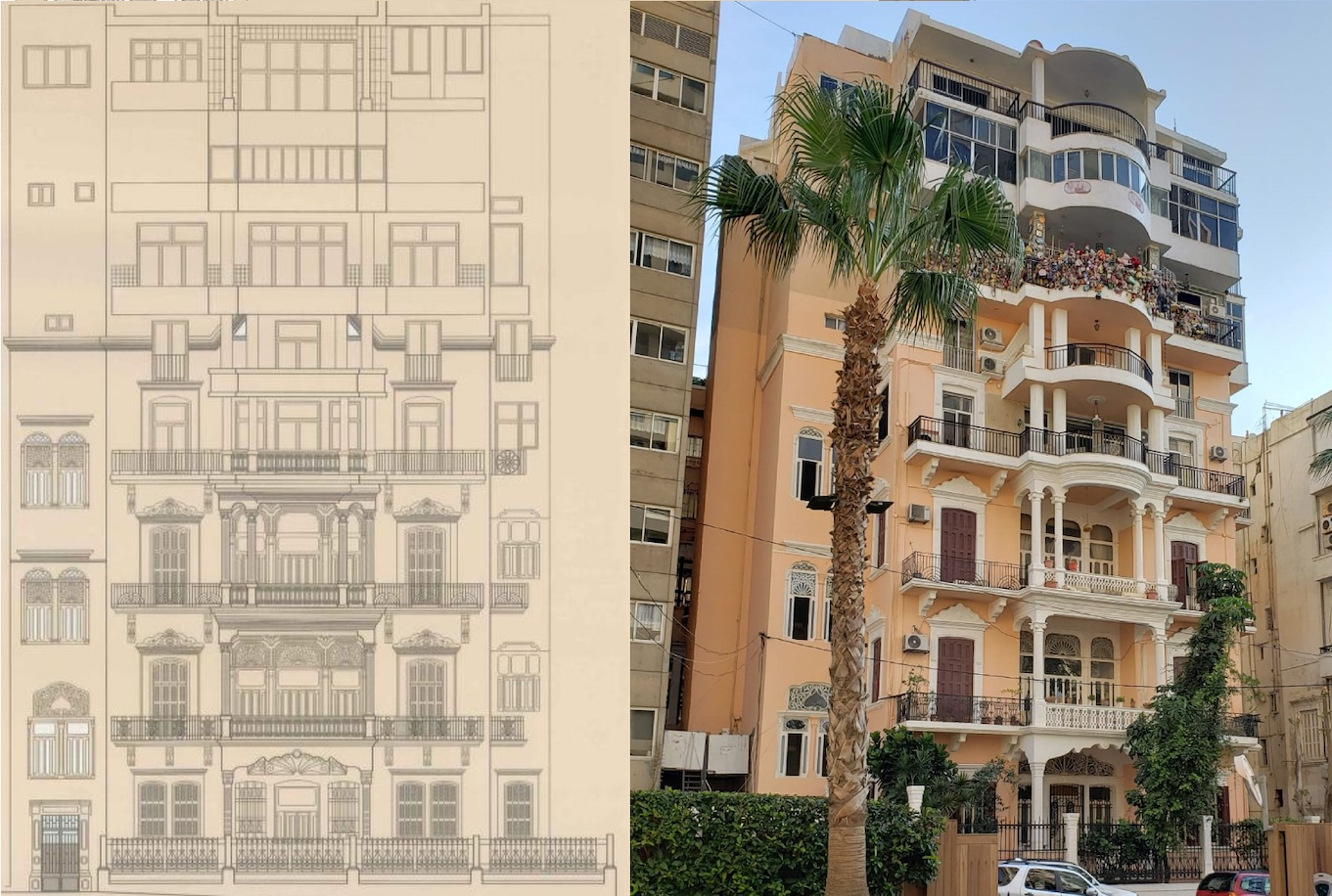 Bliss Street's Ghazzawi building, right, alongside Saliba's sketch of the structure. (Credit: Mohamed El Chamaa)
Bliss Street's Ghazzawi building, right, alongside Saliba's sketch of the structure. (Credit: Mohamed El Chamaa)
After the blast
This is the second installation of the exhibition. The first was in July of 2022 in Beirut’s Gemmayzeh neighborhood, where it appeared as an open-air show. Unlike the first iteration, this show has been housed indoors. It is also the first showing of Saliba’s work since his passing.
The idea for the exhibition came in the wake of the Aug. 4 Beirut blast, which nearly killed Saliba, who was nearby at the time.
Two weeks after the blast, the architect approached then-head of the Order of Engineers and Architects, Jad Tabet, as well as Ghaith Abi Ghanem and Jad Melki, the duo behind the Ghaith&Jad design studio. He had an idea to turn his book on Beirut architecture into an exhibition.
“We spent time together brainstorming until we came up with this idea of a courtyard where all these buildings become partially fragmented models for people to understand in 3D,” Abi Ghanem tells L’Orient Today.
“We’re so happy that we got to do this together and for him to see the show come to life before his passing.”
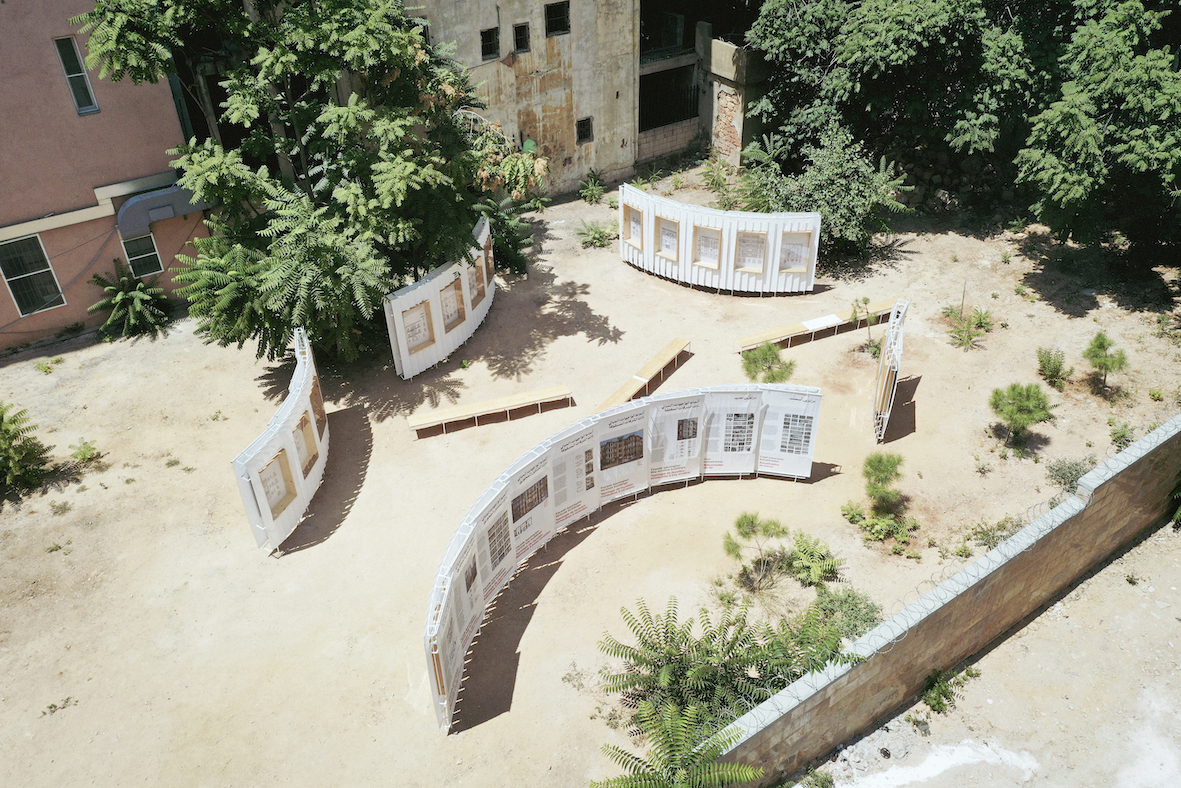 An open air exhibition of Salaiba's work staged in Gemmayzeh, July, 2022. (Photo by Joe Khoury, courtesy of Ghaith and Jad)
An open air exhibition of Salaiba's work staged in Gemmayzeh, July, 2022. (Photo by Joe Khoury, courtesy of Ghaith and Jad)
The exhibition received funding from the French ministries of culture and ecology and, nearly two years after the port blast, the show was ready to go.
The 24 building surveys on display were drawn in detail by Saliba’s students for their historic and stylistic significance in a 1994 design studio he taught at AUB. All are named in the back of his book.
Saliba, and by extension the exhibition, challenge audiences to question the assumption that there is one vernacular form of Lebanese architecture, arguing that the country’s architectural heritage is an eclectic mix of different styles across eras.
The buildings surveyed by Saliba’s students are located outside Beirut’s historic core — in places like Zoqaq al-Blat, Moseitbeh, Bashoura, Ras al-Nabeh, Gemmayzeh, Mar Mikhael and Ras Beirut. Once quiet neighborhoods, they urbanized as Beirut rose as a regional trade hub in the late 1800s.
One of the students who surveyed the buildings back in the mid-1990s was Mona Fawaz, who later went on to become Saliba’s colleague at AUB’s School of Design.
At a memorial in the auditorium next door just before the exhibition, Fawaz touches on how she met Saliba as an undergraduate student in the same auditorium as his students were presenting their work on downtown Beirut.
The Lebanese Civil War had just ended. The city, torn across various battle lines, stood in tatters. “We did not know what Beirut was,” Fawaz says. His teachings “shaped my interest in the city,” providing a “language that helped me to navigate my Master’s and PhD.”
Fawaz is one among many faculty and students who reminisce at Friday’s gathering about their encounters with Saliba.
In a recorded video, artist Akram Zaatari recalls his first encounter with Saliba in 1988. At the time, the late professor was teaching an Urban Planning class to AUB architecture students, one of whom was Zaatari.
One of their assignments: go to the city’s bustling Hamra district, do fieldwork on the everyday lived experiences of its dwellers and then generate land-use maps and other maps drawn from memory. The work, Zaatari says, “helped me make new ties with the city, with analytical practice devoid of emotions.”
Saliba passed away on Oct. 6. Caretaker Culture Minister Mohammad Mortada mourned his loss, saying that he “left a distinguished legacy.”
Beirut MP Ibrahim Mneimneh, who also studied at the School of Design, says to the attendees he “can’t comprehend sadness and loss… He was a teacher and friend. His loss is huge and will leave a void.”
“Although he had no children of his own,” says Saliba’s niece Lubana Halabi, “he showed love to his whole family.”
“Robert’s endless curiosity, joy, enthusiasm and artistic feeling have inspired many of us in the family,” says his nephew Emmanual Saliba.
Before the exhibition finally begins, Mona Hallak, one of the founders of urban culture center Beit Beirut, announced there were plans to move the exhibition to the center, where it could become part of the permanent collection.
Speaking to L’Orient Today, the Dean of AUB’s Maroun Semaan Faculty of Engineering and Architecture, Alan Shihadeh says, “Robert was an unbelievable resource for so many of us in this city. He’s someone who always had something new to teach us. I will miss him dearly.”
The remarks end, and the attendees file out of the auditorium and into the exhibition. More than a hundred people walk among the display cases of drawings, some trying to place where in Beirut they’ve seen the buildings before.
Jad Tabet, the former head of the Order of Engineers and Architects, tells attendees he recalls overhearing passersby impressed with the work when the exhibition first ran in July.
One person in particular seemed surprised at the sheer scope of styles, eras and buildings from across the city collected on paper — from multi-storey arch-windowed homes to buildings with the city’s first veranda.
“All this is in Beirut?”
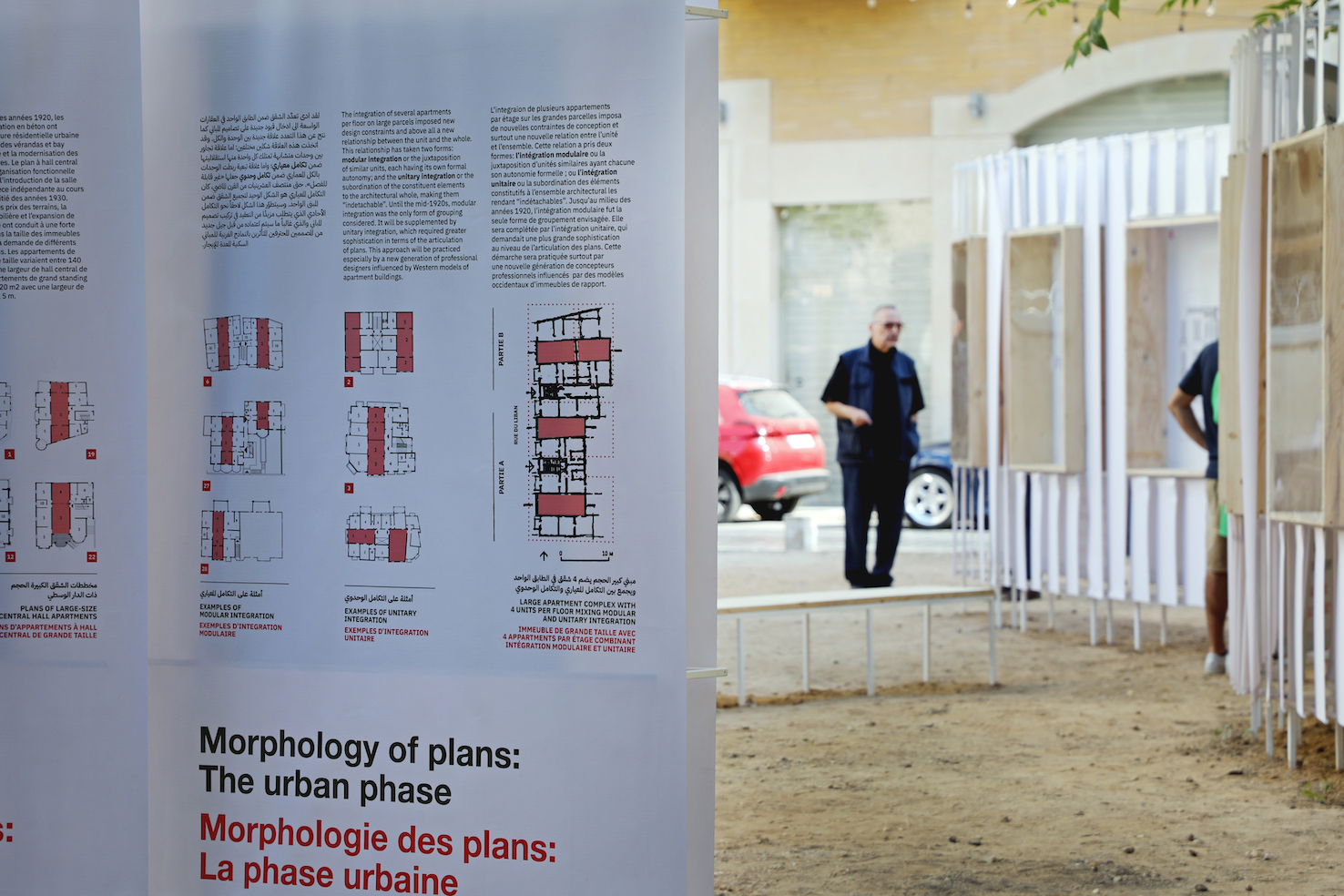 Robert Saliba, background, at the opening of the open air exhibition of his work staged in Gemmayzeh, July, 2022. (Photo by Vrouyr Joubanian, courtesy of Ghaith and Jad)
Robert Saliba, background, at the opening of the open air exhibition of his work staged in Gemmayzeh, July, 2022. (Photo by Vrouyr Joubanian, courtesy of Ghaith and Jad)
